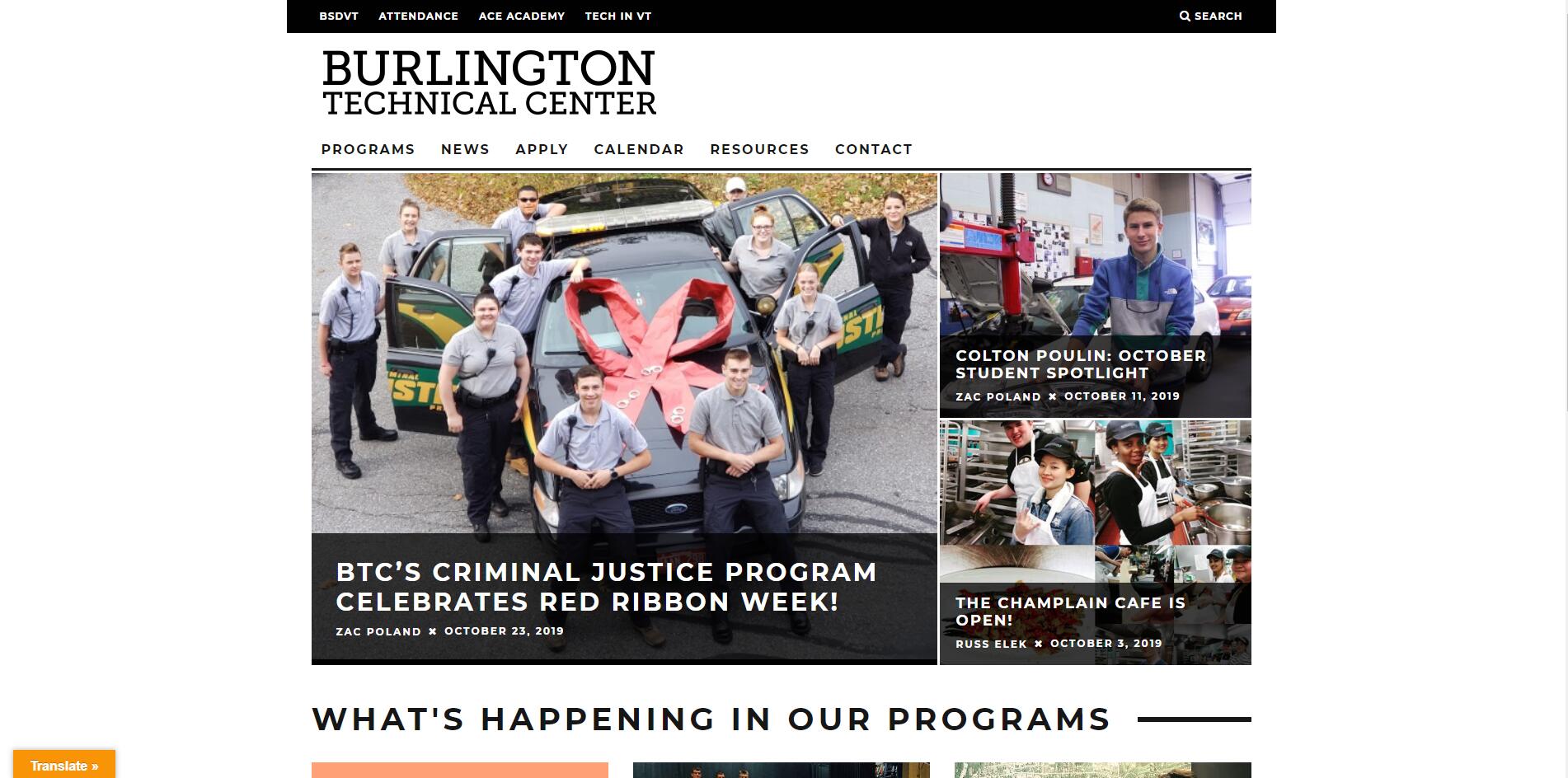How many community colleges in Vermont? There are a total of 2 two-year, public community colleges and trade schools located throughout the state of Vermont. For each school, you can see its contact information, academic calendar, campus environment, and number of students enrolled. Schools in Vermont are listed alphabetically.
Community College of Vermont
Address: 103 South Main Street, Waterbury, VT 05676
Phone Number: (802) 241-3535
President: Timothy Donovan
Type of School: Public, 2-Year
Academic Calendar: Semester
Degree Offered: Associate’s Degree
Campus Settings: Distant Town
Number of Students: 5,608
Abbreviation: CCV

Burlington Technical Center
Address: 52 Institute Road, Burlington, VT 05408
Phone Number: (802) 864-8436
Director: Mark Aliquo
Type of School: Public, Less-Than 2-Year
Academic Calendar: Continuous
Degree Offered: Non-Degree Granting
Campus Settings: Small City
Number of Students: 7

U.S. Belts
The “Black Belt” is another region in the southern United States, among whose residents there is a very high percentage of black Americans. Originally, the term described the dark soil of this very agriculturally favorable area. Later, due to the fact that a lot of black slaves were brought here, the name changed its meaning. The US Black Belt includes the states of Texas, Louisiana, Arkansas, Mississippi, Alabama, Georgia, South Carolina, North Carolina, Virginia, and Delaware.
The Mormon Corridor is a region in the Western United States that is home to a large number of followers of The Church of Jesus Christ of Latter-day Saints, also known as Mormons. The “Mormon Corridor” includes the territory of Utah (where Mormons founded settlements in the second half of the 19th century) and neighboring Wyoming, Idaho, Nevada, Arizona and California. This region is often jokingly referred to as the “Jelly Belt”, the name comes from the belief that a variety of jellies (gelatin-based dishes) are the favorite food of the Mormons. Obviously, this legend is true to some extent, since jelly candies are one of the unofficial symbols of the state of Utah.
The Rust Belt is a region in the Northeast and Midwest of the United States. Previously, it was known as “Industrial”, “Factory” or “Steel Belt”, as many industrial enterprises (steel, engineering, automotive and others) were located here. The name “Rust Belt” appeared due to the decline of US industry in the seventies of the last century, when many enterprises in the region were closed, and, figuratively speaking, only “rusty iron” remained of them. Later, with the next rise in industrial production in the region, the region again became largely “factory”, but, nevertheless, the old name is often used. V “, Indiana, Ohio, Michigan, New York, New Jersey, Pennsylvania, Maryland and West Virginia.
“Corn Belt” ( “Grain Belt”) – an area in the Midwest of the United States, where traditionally, since the middle of the XIX century, the main crops are cereals (primarily corn). In a broader sense, the “Grain Belt” is agricultural areas, the breadbasket of the country. The “Corn Belt” includes the states of Iowa, Illinois, Indiana, Nebraska, Kansas, Minnesota, and Missouri.
The “Rice Belt” are the states of Arkansas, Louisiana, Mississippi, and Texas, which provide the majority of the rice crop in the United States.
“Sun Belt” – States in the South and West of the United States, a distinctive feature of which is a warm climate with long hot summers and short, mild winters. The “Sun Belt” includes the states of Alabama, Arizona, Arkansas, Florida, Georgia,Louisiana, Mississippi, New Mexico, North Carolina, Oklahoma, South Carolina, Tennessee, Texas, California, Nevada and Virginia.
Accordingly, the Frost Belt is the states in the Northeast and the Midwest (Minnesota, Wisconsin, Iowa, Illinois, Indiana, Michigan, Ohio, Pennsylvania, New York, Connecticut, Massachusetts, Rhode Island, Vermont, New Hampshire and Maine), which are characterized by more or less cold winters and where there are heavy snowfalls.
